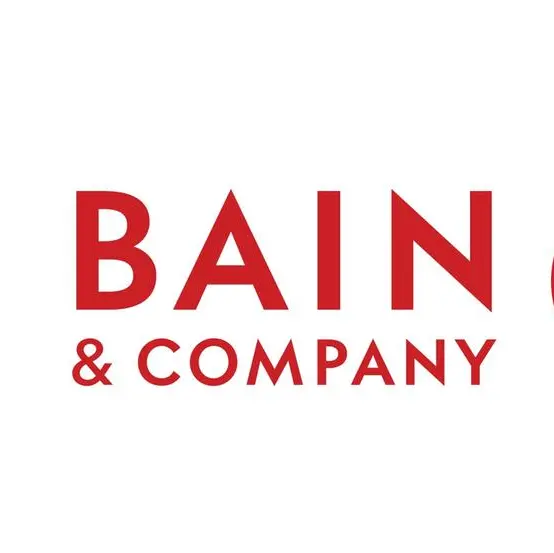PHOTO
Panaroma of Dubai skyline with Burj khalifa and other skyscrapers at night from Al Jadaf Waterfront; UAE. Image used for illustrative purpose. Getty Images
DUBAI (S&P Global Ratings) -- The United Arab Emirates (UAE) experienced on April 16 the most substantial rainfall in 75 years since climate data recording began in 1949. This led to unprecedented flooding that turned many main roads, particularly in Dubai, into waterways, leaving motorists stranded and causing widespread travel disruption and damage.
It is too early to assess the full financial impact of this natural disaster on the UAE's insurance sector; therefore negative rating actions are unlikely at this time. Nevertheless, S&P Global Ratings considers that most insurers it rates in the region benefit from robust capital and liquidity buffers and should be able to absorb related claims. We therefore expect an earnings impact for most insurers, but that the capital and liquidity buffers of insurance companies with weaker capitalization could be tested. We will continue to monitor developments over the coming weeks.
We expect claims relating to motor and property damage will make up the majority of losses for local insurers. Insurance companies typically pass large, high-value commercial risks on to international reinsurers. However, risks relating to motor business are, in most cases, retained by local insurers. That said, although the number of motor claims will be high, the industry will likely be able to cope with the total amount of insured losses. This is because:
- There are currently about 60 licensed insurers in the UAE, of which the vast majority underwrite risks related to property/casualty, including motor business. This implies claims will be spread across a large number of insurers in the market.
- We expect that a significant number of cars damaged during the rainstorm have only third-party insurance and are therefore not covered for natural disasters such as flooding. Damage from flooding is typically covered under comprehensive motor policies. However, such coverage may apply only under certain circumstances, for example, when a vehicle is parked and not moving, further limiting the liability of insurers.
- The accumulation of claims from the same storm could also trigger reinsurance policies, depending on the reinsurance coverage companies have in place. This implies that the liability of those insurers would be capped at a set amount.
Damage to commercial and residential properties has also been substantial, based on early estimates. However, we note that many larger, high-value commercial risks are usually ceded to international reinsurers, meaning that local insurers retain only minimal or, in some cases, no risk.
At the same time, some property developers in Dubai have announced that they would cover repair costs for residential buildings. This, together with the relatively low number of home content insurance policies, could further limit the exposure for local insurers, in our view.
We also expect that insurers will receive a number of claims relating to damage to key infrastructure, such as Dubai's airport and public rail network, and to large shopping malls, which were heavily affected by the adverse weather. However, again we expect the impact on local insurers to be limited, since these types of risks are typically ceded to reinsurers and local insurers' retention levels are low.
Solvency capital buffers and reinsurance programs will be put to the test. Although most insurers we rate in the UAE have robust capital and liquidity buffers, the solvency of about 20% of the listed insurers is only slightly higher, or even lower, than the required regulatory minimum. As a result, we anticipate that the capital and liquidity buffers of some insurers with weak capital positions could become strained, potentially leading to some delays in claim payments. In our view, this could be the case in particular for thinly capitalized insurers that retain a large portion of motor and other risks and those that do not have adequate reinsurance cover in place.
Motor and property insurance rates could increase. Many motor insurers in the UAE have increased their rates by up to 50% for certain coverage over the past year, due to a spike in the frequency and costs of claims. In view of the recent floods, we anticipate another round of rate increases, mainly for comprehensive motor policies. We also anticipate that rates for insuring commercial and residential property risks could increase as local insurers and international reinsurers review their pricing following a rise in the frequency and severity of rainstorms in the UAE and neighboring countries.
In addition to rate hikes, we foresee an increase in demand for insurance, alongside planned infrastructure projects following the recent floods. This should support an increase in insurance penetration (measured as gross written premiums divided by gross domestic product), which stood at about 3.1% in 2023 compared to a global average of about 5.5%.
Related Research
- GCC Insurers Plow Ahead As Geopolitical Tensions Intensify, April 17, 2024
- Risks For The EMEA Insurance Industry From The Iran-Israel Conflict Remain, April 17, 2024 - Global Credit Conditions Update: Geopolitical Risks Rise On Iran-Israel Conflict Expansion Despite Immediate Reprieve, April 15, 2024
- Economic Research: EMEA Insurance Outlook 2024: Navigating The Way Home, Nov. 21, 2023 S&P Global Ratings, part of S&P Global Inc. (NYSE: SPGI), is the world's leading provider of independent credit risk research. We publish more than a million credit ratings on debt issued by sovereign, municipal, corporate and financial sector entities. With over 1,600 credit analysts in 27 countries, and more than 150 years' experience of assessing credit risk, we offer a unique combination of global coverage and local insight. Our research and opinions about relative credit risk provide market participants with information that helps to support the growth of transparent, liquid debt markets worldwide.
This report does not constitute a rating action.
-Ends-
STANDARD & POOR’S, S&P and RATINGSDIRECT are registered trademarks of Standard & Poor’s Financial Services LLC.
Disclaimer
S&P may receive compensation for its ratings and certain analyses, normally from issuers or underwriters of securities or from obligors. S&P reserves the right to disseminate its opinions and analyses. S&P's public ratings and analyses are made available on its Web sites, www.spglobal.com/ratings (free of charge), and www.ratingsdirect.com (subscription), and may be distributed through other means, including via S&P publications and third-party redistributors.
Additional information about our ratings fees is available at www.spglobal.com/usratingsfees.
S&P keeps certain activities of its business units separate from each other in order to preserve the independence and objectivity of their respective activities.
As a result, certain business units of S&P may have information that is not available to other S&P business units. S&P has established policies and procedures to maintain the confidentiality of certain non-public information received in connection with each analytical process.
To the extent that regulatory authorities allow a rating agency to acknowledge in one jurisdiction a rating issued in another jurisdiction for certain regulatory purposes, S&P reserves the right to assign, withdraw or suspend such acknowledgment at any time and in its sole discretion. S&P Parties disclaim any duty whatsoever arising out of the assignment, withdrawal or suspension of an acknowledgment as well as any liability for any damage alleged to have been suffered on account thereof.
Credit-related and other analyses, including ratings, and statements in the Content are statements of opinion as of the date they are expressed and not statements of fact. S&P’s opinions, analyses and rating acknowledgment decisions (described below) are not recommendations to purchase, hold, or sell any securities or to make any investment decisions, and do not address the suitability of any security. S&P assumes no obligation to update the Content following publication in any form or format. The Content should not be relied on and is not a substitute for the skill, judgment and experience of the user, its management, employees, advisors and/or clients when making investment and other business decisions. S&P does not act as a fiduciary or an investment advisor except where registered as such. While S&P has obtained information from sources it believes to be reliable, S&P does not perform an audit and undertakes no duty of due diligence or independent verification of any information it receives. Rating-related publications may be published for a variety of reasons that are not necessarily dependent on action by rating committees, including, but not limited to, the publication of a periodic update on a credit rating and related analyses.
No content (including ratings, credit-related analyses and data, valuations, model, software or other application or output therefrom) or any part thereof (Content) may be modified, reverse engineered, reproduced or distributed in any form by any means, or stored in a database or retrieval system, without the prior written permission of Standard & Poor’s Financial Services LLC or its affiliates (collectively, S&P). The Content shall not be used for any unlawful or unauthorized purposes. S&P and any third-party providers, as well as their directors, officers, shareholders, employees or agents (collectively S&P Parties) do not guarantee the accuracy, completeness, timeliness or availability of the Content. S&P Parties are not responsible for any errors or omissions (negligent or otherwise), regardless of the cause, for the results obtained from the use of the Content, or for the security or maintenance of any data input by the user. The Content is provided on an “as is” basis. S&P PARTIES DISCLAIM ANY AND ALL EXPRESS OR IMPLIED WARRANTIES, INCLUDING, BUT NOT LIMITED TO, ANY WARRANTIES OF MERCHANTABILITY OR FITNESS FOR A PARTICULAR PURPOSE OR USE, FREEDOM FROM BUGS, SOFTWARE ERRORS OR DEFECTS, THAT THE CONTENT’S FUNCTIONING WILL BE UNINTERRUPTED OR THAT THE CONTENT WILL OPERATE WITH ANY SOFTWARE OR HARDWARE CONFIGURATION. In no event shall S&P Parties be liable to any party for any direct, indirect, incidental, exemplary, compensatory, punitive, special or consequential damages, costs, expenses, legal fees, or losses (including, without limitation, lost income or lost profits and opportunity costs or losses caused by negligence) in connection with any use of the Content even if advised of the possibility of such damages.
Copyright © 2024 by Standard & Poor’s Financial Services LLC. All rights reserved.




















